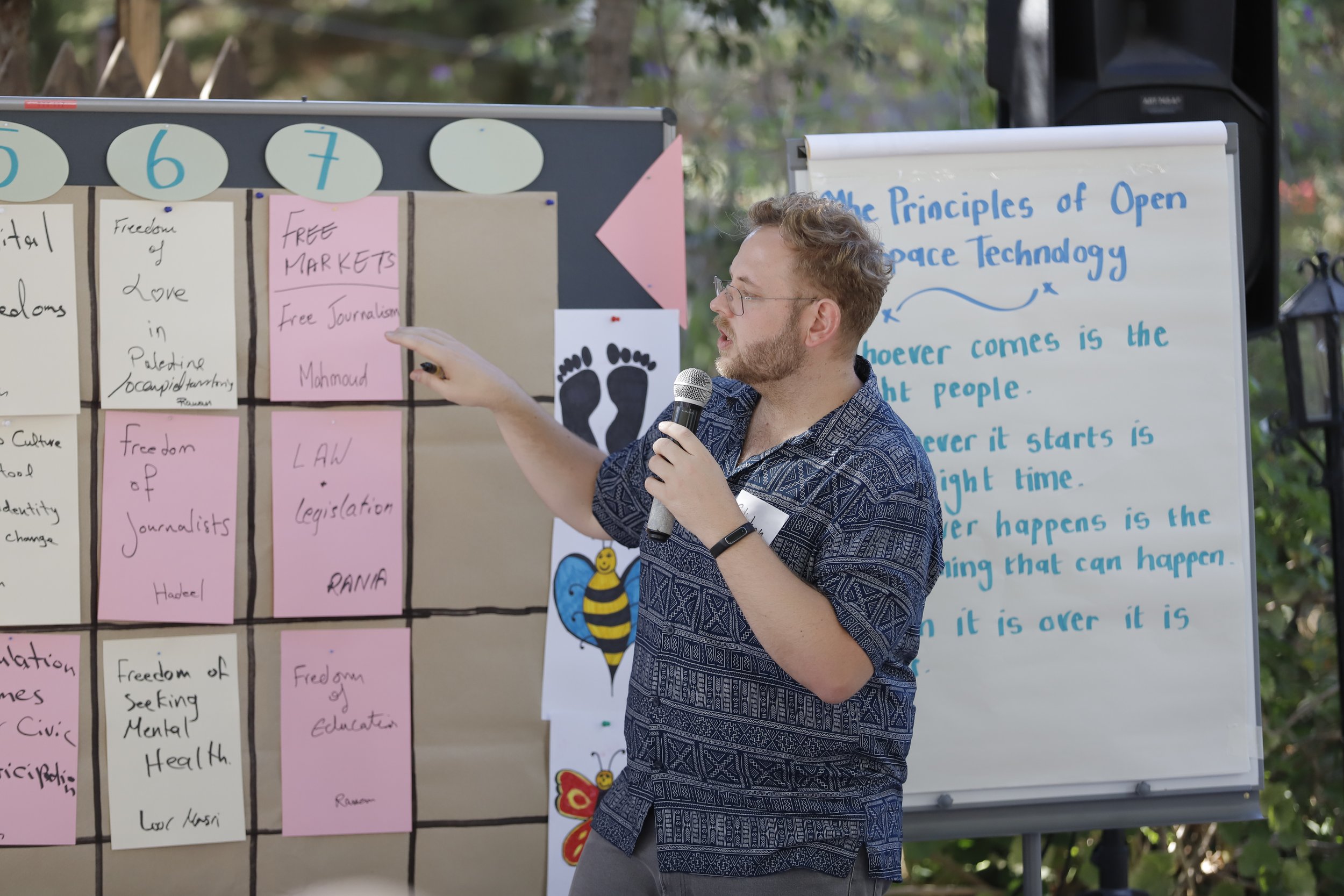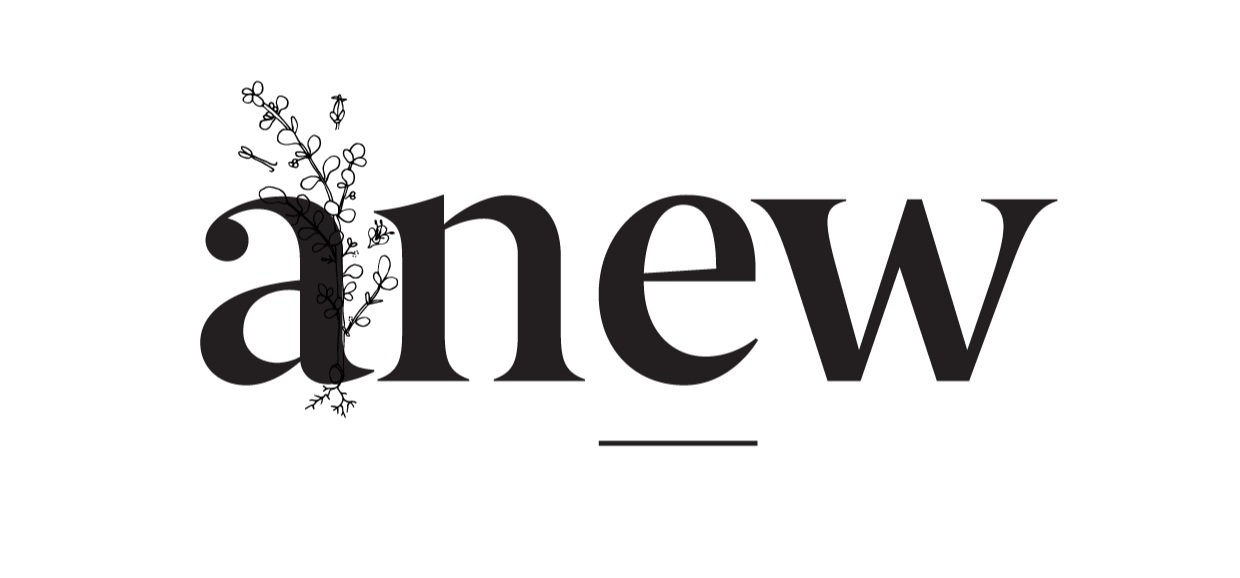What is Open Space Technology?
Open Space Technology (OST) is a powerful way to bring people together for meaningful conversations. Created by Harrison Owen in the 1980s, it’s a simple yet effective method where participants shape the agenda in real time. It works best when there’s a shared purpose, a need for open dialogue, and a willingness to explore possibilities together. Rather than a rigid structure, OST embraces fluidity, allowing ideas to emerge organically.
For first-time facilitators of this method it can feel daunting to not have a fixed agenda, but rest assured, in the decade and more that we've been using this method, we have not once had a complete failure. The impact of the session is determined by a few parameters to consider for when and, more importantly, when not to use OST as the vehicle for your conversations.
When to Use Open Space Technology
OST is a great choice when:
The topic is complex and requires diverse perspectives.
You need people to engage deeply and take ownership of the conversation.
Traditional meetings feel too rigid or uninspiring.
The group is large enough (20+ people) and mostly curious to participate (it’s okay to have some that may be resistant to this method - once they experience it, they are usually convinced to join in).
There’s a real openness to unexpected insights and outcomes.
When Not to Use Open Space Technology
Despite its strengths, OST isn’t always the right fit. It may not work well when:
There’s a need for a clear, predetermined outcome or decision.
Trust is low, and people are unwilling to share openly.
Leadership wants to control the direction of the discussion.
The group is too small (fewer than 10 people) to generate momentum.
The session requires expert-led input rather than idea and questions exploration.
How to Facilitate an Open Space Technology Session
Define the Theme
Start with a compelling theme or question that sparks curiosity and invites broad participation. This theme is pre-determined and checked with any role-players, though it should be clear yet open-ended enough to encourage diverse discussions. One of our go-to themes to use at the end of a long programme or 10-day seminar is “What unanswered questions, ideas or topics about [insert subject focus of the programme/seminar e.g. leadership, organisational development, political campaigns,etc] do you have that you would like to discuss with this group?”
Set the Guiding Principles
OST is built on four simple principles:
Whoever comes is the right people. The ones who show up are the ones who are meant to be there.
Whatever happens is the only thing that could have. Trust in the process and embrace what unfolds.
Whenever it starts is the right time. Creativity isn’t bound by a clock.
When it’s over, it’s over. Conversations end when they naturally run their course.
It helps to display these principles somewhere in the room as a constant reminder and “container creator” for the atmosphere you’re trying to create.
Introduce the Law of Two Feet
The Law of Two feet means that participants are encouraged to take responsibility for their own experience. If a conversation isn’t working for them, they should feel free to move to another that feels more relevant or energising. If they’re not learning or contributing, let their curiosity take them somewhere else.
If participants apply this law fully, you’ll see two types of behaviours: the bee and the butterfly. The bee hops from conversation to conversation and cross pollinates actively. The butterfly sometimes just hovers around looking pretty and that’s okay. Each participant is driven by their curiosity. We even put up a picture of a bee and butterfly (see pictures below) to contribute to the atmosphere accepting of this behaviour.
Co-Create the Agenda in Real Time
Instead of a preset agenda, participants generate discussion topics on the spot. They write their topics on paper, announce them to the group, and place them on a visible agenda wall that you’ve created before-hand. This allows everyone to put topics on the agenda that most interest them. Those who submit a topic should write it in a clear way, preferably a question, and also include their name on the topic card, since they will be the host of that conversation at some point.
This is the part that requires the most nerves from the facilitator - will anyone submit a topic? Will there be enough? Will there be too much? Just breathe and step into your own curious ability to hold the space, even if it takes a few minutes to gather momentum.
Clarify the Role of the Hosts
The hosts are there to listen and drive the conversation with their questions. They are not there to present a lecture on the topic, but to learn from others based on their shared curiosity about the topic. You can provide flip chart paper for each host to write the topic, their name(s) and the main discussion points, ideas or decisions for later reference. Encourage hosts to remain at their stations, even if nobody initially shows up for the conversation, because someone will most likely show up after a few minutes.
Facilitate Multiple Breakout Sessions
People self-organise into small groups around the topics. Discussions flow naturally, and participants are free to move between groups as needed. This flexibility helps keep the energy high and ideas fresh. The role of the facilitator is to manage the time and the energy. We like to display a big countdown timer and play some non-intrusive music in the background while the conversations are ongoing. When a time slot is over, you can simply announce it and allow some time for the next round of hosts to settle in and people to decide which conversations they want to go to next.
Capture the Learnings
Encourage note-taking in each group. This can be done through shared documents, visual recordings, or even brief reflections at the end of the session. The goal is to ensure key insights don’t get lost.
Close with Reflection and Action Steps
You can end the session in many ways. Some facilitators prefer a report method (a gallery walk or a short verbal report back of main ideas raised), but be sure to keep an eye on the energy in the room. We prefer to end with a collective reflection in the form of an open discussion or a closing round. Simply invite participants to share their biggest takeaways and next steps. This creates a sense of closure and momentum moving forward.






Frequently Asked Questions (FAQ)
How long should an Open Space session last?
It depends on the context. OST can run for a few hours, a full day, or even span multiple days. The key is to allow enough time for deep and meaningful discussions. For a group of 20-30 people, we usually allow for 1 hour of introducing the method and the principles, co-creating the agenda and taking a small break before the first session starts. With a group of this size, we usually create a 4x4 agenda grid (allowing for 16 topics in total), but you can always add or remove a venue depending on the number of topics submitted. For a group of this size we typically limit the time slots to 25-20 minutes each with a 2 minute changeover in between.
What if no one proposes topics?
If people are hesitant, the facilitator can start by sharing an idea or asking thought-provoking questions. You could ignite their thoughts with a question to be discussed in pairs first. If no topics emerge, it may indicate the group isn’t ready for an OST session or that the theme needs to be adjusted. Check-in with the group about this to decide whether to proceed or to change gears completely.
How do we ensure follow-through after an OST session?
Encourage participants to document their discussions and commit to next steps. Shared notes, accountability partners, or follow-up meetings can help maintain momentum. You may even encourage all participants to share one concrete next step that flowed from the session.
What if someone dominates a discussion?
The Law of Two Feet helps with this—people can simply leave a conversation that isn’t serving them. However, facilitators can also gently remind participants to create space for all voices.
Can OST work online?
Yes! Virtual OST requires tools like Miro, Mural, or Google Docs for agenda-setting and platforms like Zoom or Butter for breakout sessions. The key is to keep movement between discussions easy and fluid. Make sure to set up your breakout rooms in such a way that participants can move freely from one to the other and that the virtual agenda and note-taking space is accessible to everyone at all times.
Final Thoughts
Open Space Technology is more than a facilitation method—it’s a way of inviting people to take ownership of their learning and collaboration. When done well, it creates space for rich dialogue, fresh ideas, and real connection. If you’re curious about exploring a wider range of facilitation approaches, our School of Facilitation offers in-depth learning experiences that support facilitators to guide transformative conversations.

